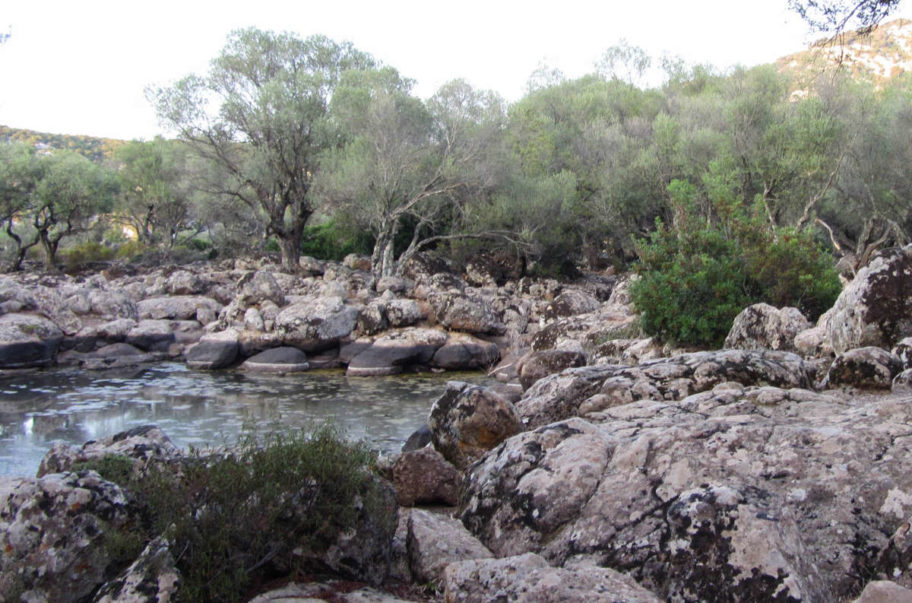Corpo Pagina
The territory of Baunei has returned back remarkable testaments oh human presence since the Neolithic age, such as ceramic fragments coming from caves under rock shelters and from megalithic structures and domus de janas.
Among the most important site stands up the “grotta de su marinaiu” (the sailor cave) in the nearest of Cala Luna in which has been recovered fragments of obxidian and flint and a ceramic bowl, and the “grutta of janas” characterized by numerous petroglyphs depicting antropomorph and astral symbols and animals.
The Nuragic era dates back to greater evidence with a widespread occupation of the territory, which is expressed in the presence of about 120 nuragic sites, including villages, single-tower and complex nuraghi, tombs of giants, cult structures, walls and megalithic works of uncertain interpretation, the so-called “as piscinas”, of the semi-natural pools in the Golgo plateau in the Supramonte di Baunei.
Among the numerous nuraghi of the plateau we mention the nuraghe “Coa ‘e Serra” and its village and the nuraghe “Orgoduri” a short distance from the country church dedicated to Saint Peter. In the vicinity of the church there is a baetylus with anthropomorphic protome, perhaps pertinent to a tomb of the giants. Baetylus is something unique in the panorama of Sardinian archeology, precisely because of the presence of the stylized face.
As for the Punic and then Roman eras, the only evidences known so far concern the Roman coastal road and the countless amphorae found along the coast, the only surviving sign of a period characterized by flourishing trade throughout the Mediterranean.

